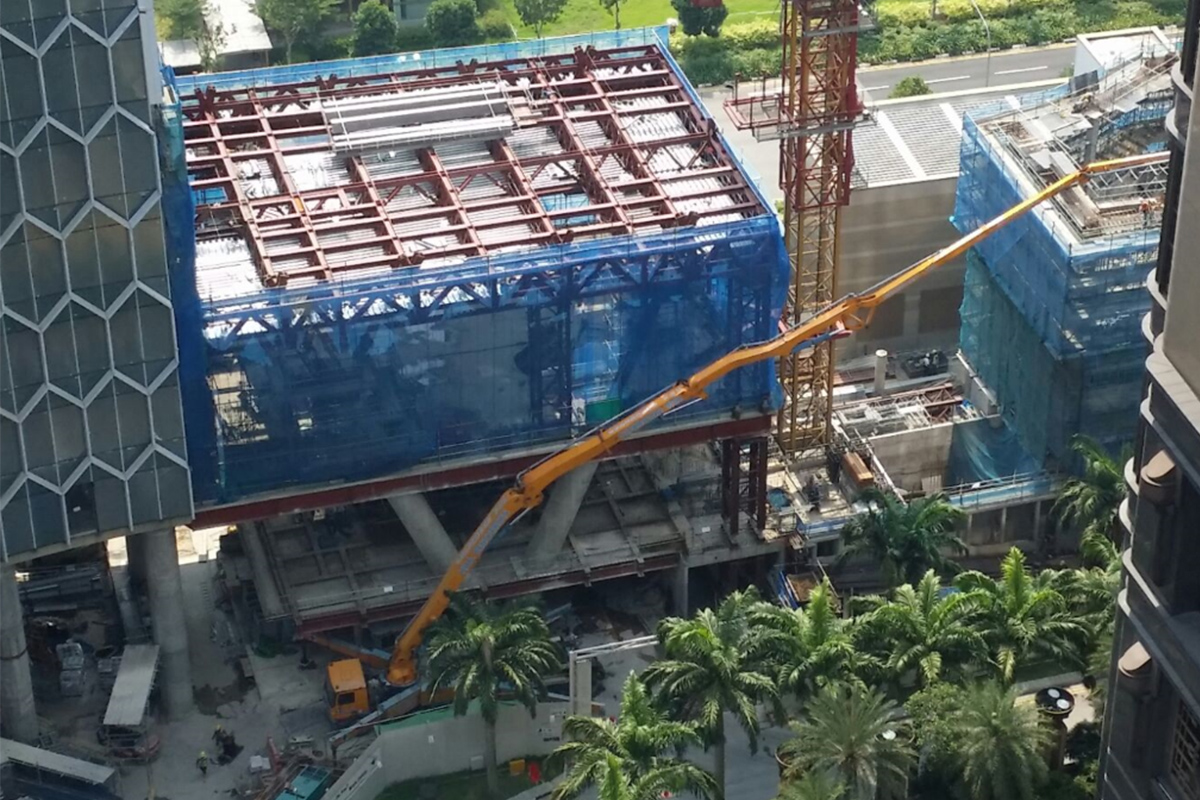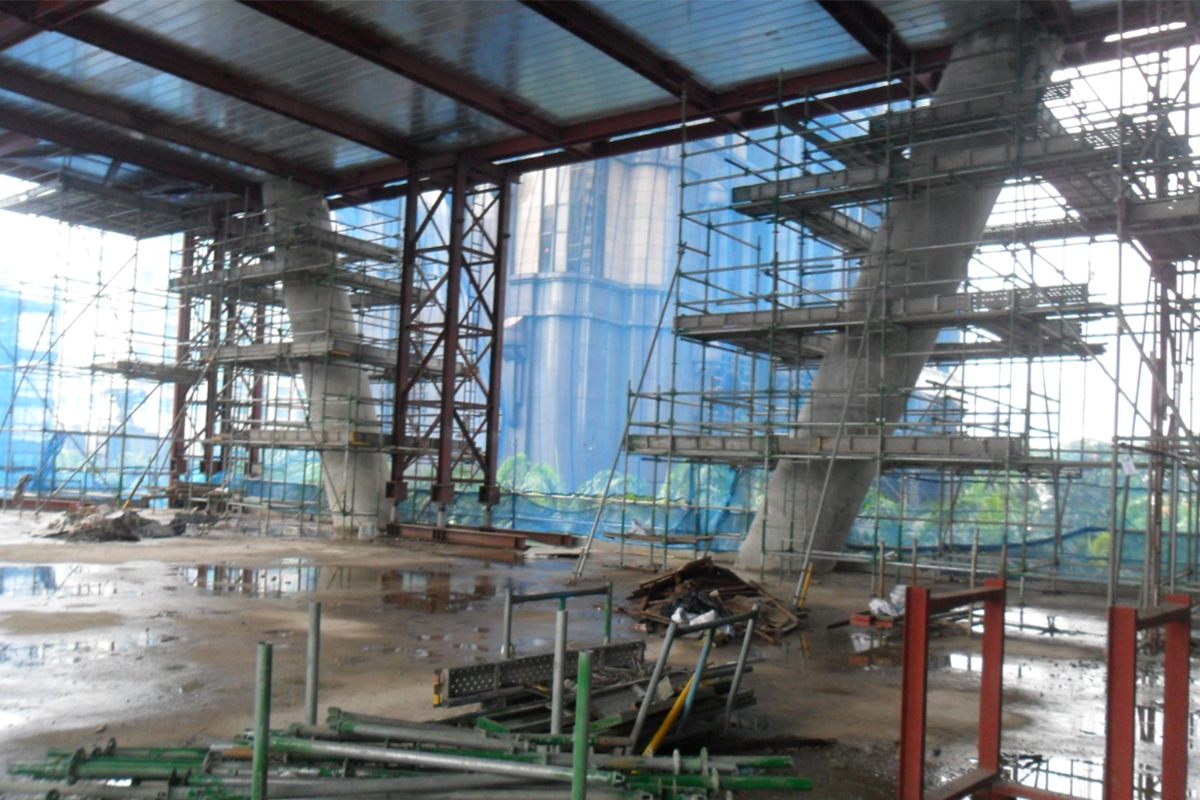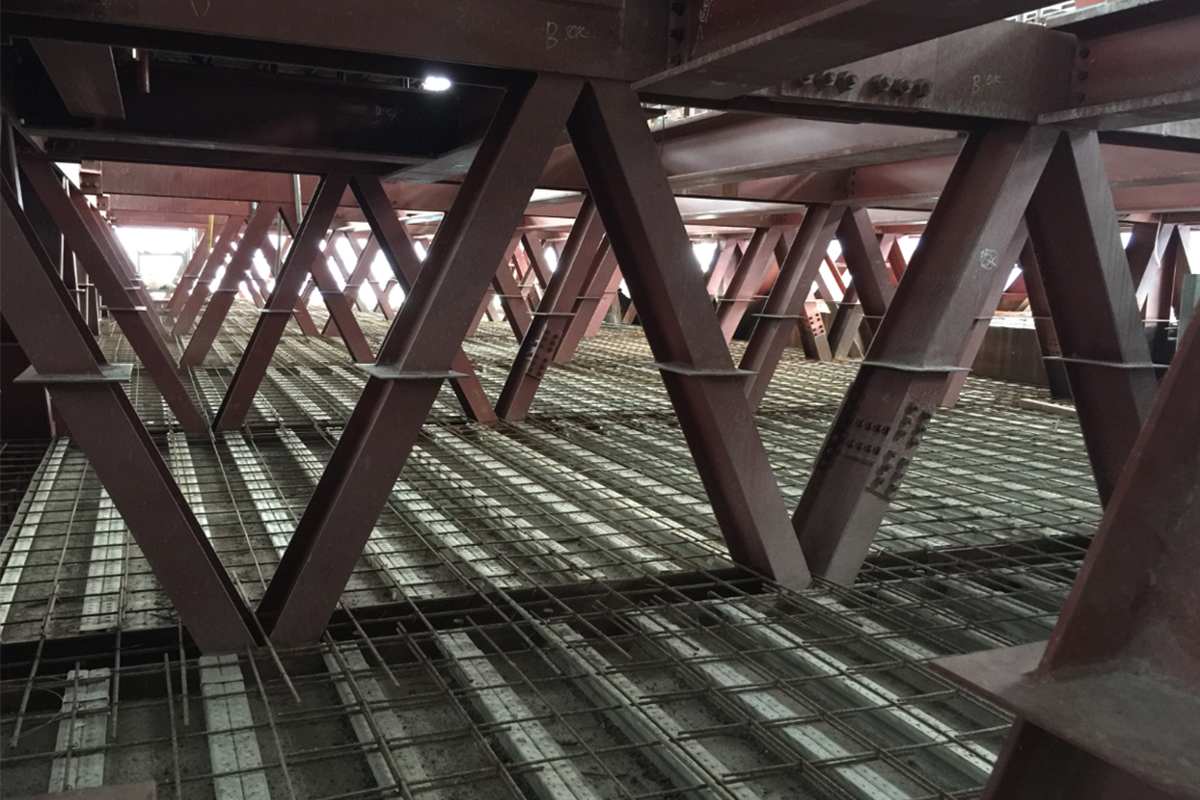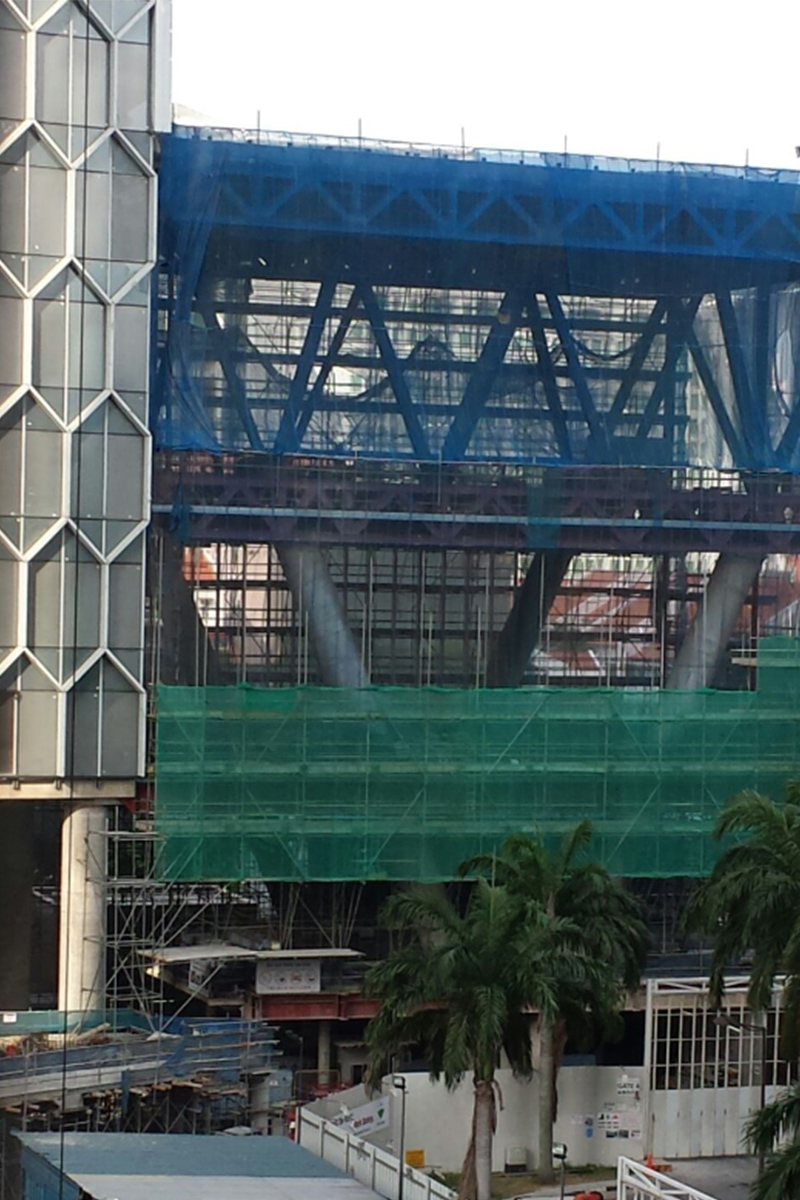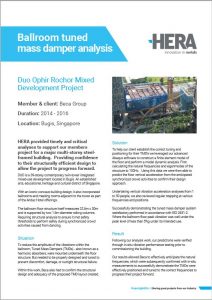Ballroom tuned mass damper analysis
Member & client: Beca Group
Duration: 2014 – 2016
Location: Bugis, Singapore
HERA provided timely and critical analyses to help support our members on a major multi-storey steel-framed building in Singapore. Providing confidence to their structurally efficient design and allowing the project to progress forward.
DUO is a 39-storey contemporary twin-tower integrated mixed-use development located in Bugis. An established arts, educational, heritage and cultural district of Singapore.
With an iconic concave building design, it also incorporated ballrooms and meeting rooms adjacent to the tower as part of the Andaz Hotel offerings.
The ballroom floor structure itself measures 22.6m x 30m and is supported by two 1.6m diameter raking columns. Requiring structural analysis to ensure it met safety thresholds to perform safely during synchronized crowd activities occasioned from dancing.
To reduce the amplitude of the vibrations within the ballroom, Tuned Mass Dampers (TMDs) (also known as a harmonic absorbers), were mounted underneath the floor structure. But needed to be properly designed and tuned to prevent discomfort, damage, or outright structural failure.
Within this work, Beca also had to confirm the structural design and adequacy of the proposed TMD layout they had created.
To help our Client establish the correct tuning and positioning for their TMD’s we leveraged our advanced Abaqus software to construct a finite element model of the floor and perform a modal dynamic analysis. First calculating the natural frequencies and eigenmodes of the structure to 100Hz. Using this data we were then able to predict the floor vertical acceleration from the anticipated synchronized crowd activities to confirm their design approach.
Undertaking vertical vibration acceleration analyses from 1 to 50 people, we also reviewed regular stepping at various frequencies and positions.
Successfully demonstrating the tuned mass damper system satisfactory performed in accordance with ISO 2631-2. Where the ballroom floor peak vibration was well under the peak level of less than 5%g under its intended use.
Following our analysis work, our predictions were verified through in-situ vibration performance testing prior to commissioning the building. Our results allowed them to anticipate the natural frequencies, which were subsequently confirmed with in-situ measurements to successfully demonstrate the TMDs were effectively positioned and tuned to the correct frequencies to progress the project forward.
See the finished project – nominated for the Structural Awards 2018
